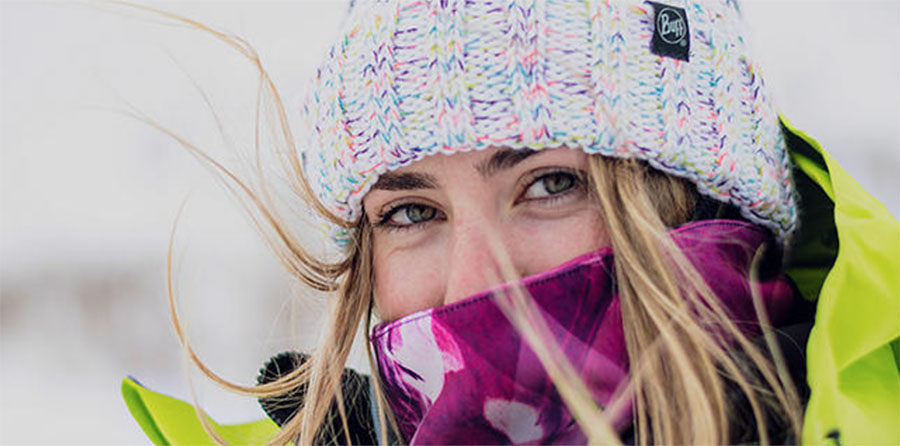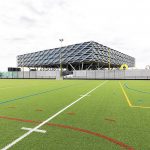By Eric Smith
<span style="color: #9c9c9c;">The last month has been disastrous for the outdoor industry.
Brands that once navigated supply chain issues now face sell-in headwinds. Retailers deemed non-essential were forced to shutter their doors indefinitely and furlough much of their staffs. And outdoor enthusiasts have been asked by local and state governments, if not mandated, to keep off trails and stay home.
But a few companies have emerged from this global pandemic as so-called “winners,” and perhaps the hottest category this side of a six-foot social distance is the ubiquitous neck tube—aka gaiter, aka scarf, aka multifunction headwear—that’s primarily used in a variety of outdoor pursuits to protect wearers from the elements.
With the rise of stay-at-home and shelter-in-place guidelines over the last month, many people venturing out in public, however limited, have been buying these face coverings in droves hoping they’ll be now protected from the coronavirus.
Sales volume accelerated when the Centers for Disease Control recently recommended “wearing cloth face coverings in public settings where other social distancing measures are difficult to maintain (e.g., grocery stores and pharmacies), especially in areas of significant community-based transmission.”
That helped drive demand, as numerous brands told SGB Executive. And the potential for a second wave of the coronavirus coming later this year has more consumers in search of an inexpensive, easy-to-wear accessory for their stroll around the neighborhood or quick trip to the store.
“We’ve seen a significant increase in traffic on our website, as well as demand from our retailers over the course of the last couple weeks,” said Kevin Walker, marketing manager for Santa Rosa, CA-based Buff USA. “I believe that’s a direct correlation from not only how our community of outdoor-minded individuals has been thinking about this issue, but also as a result of the CDC recommendations on April 3 around the use of cotton and fabric masks and scarves to help prevent the spread of the coronavirus.”
…
Neck tubes and gaiters meant to protect one’s face from the wind on a snowy slope or the sun on an exposed hike weren’t designed to stop the spread of a virus, and the brand leaders stressed the importance of understanding this difference as they discussed the recent sales jump.
“From day one, we wanted to make sure that we were educating and informing our consumers that while our headwear and our neckwear protect against many of nature’s elements such as sun, wind and snow, our products are not proven to prevent the spread of, or prevent against any disease, illness or virus,” Walker said. “Our goal is to keep everybody safe and informed.”
But these products have found a new audience in everyday people who want to reduce their chance of exposure. The category has become another uniquely coronavirus-related success story in an environment that has also sparked demand for firearms and at-home fitness equipment makers, as well as portable power vendors and water filtration providers.
As with those other categories, neck tube brands are sensitive to their outlier boom status in an otherwise dried-up sales landscape.
“When the mask opportunity presented itself, I was concerned that people might think Headsweats is just going to take advantage of a negative situation and make money,” said Mike McQueeney, president of Boulder, CO-based Headsweats. “We’re not alone.”
Indeed they’re not. Another brand that has seen a surge in demand for their face coverings was Lewisburg, PA-based North x North.
“It’s weird and feels weird and humbling to say, but sales have exploded during this time,” said founder Chad North. “We originally thought about shutting or slowing things down until it blew over but saw a real need when the CDC recommended everyone to wear cloth face coverings when out in public to help slow the spread of the coronavirus. Orders kept pouring in so we knew we had to help meet the demand while also helping in any way we could.”
NxN joined the #Masks4All movement, discounted all of its products and decided to donate an additional 10 percent to DirectRelief.org, which gives doctors and nurses access to personal protective equipment (PPE).
“As a result of staying open, we’ve sold through most of our inventory, especially our Hooded Neck Gaiters, and have seen a 322 percent month-over-month increase and an overall 125 percent increase for the year,” Norths said. “It’s incredibly humbling.”
…
While some brands have seen sales of their existing product lines skyrocket, others have pivoted to new designs that specifically target coronavirus-wary consumers.
As Phunkshun Wear saw demand climb for its neck tubes, the Denver, CO-based company also launched a new product, the Personal Hygiene (PH) mask, which has the soul of its everyday snow mask in terms of material and design but fits and functions more like a medical mask. The decision to make these came when the state of Colorado followed CDC guidelines and advised residents to wear a mask when heading out for essentials.
“The masks are not something we had produced previously,” said CEO Jason Badgley. “I had been in contact with a few of the task forces and subcommittees that the governor in the state put together to combat the spread of COVID-19. We had developed a few different versions, should the need arise, and when the governor decided to recommend that everyone wear them and then the CDC made a similar recommendation, we were fortunate that we had spent the time to develop these. Now they’re ready to go.”
For each mask it sells, Phunkshun Wear is donating one mask to the Colorado Mask Project. Giving back. The combination of continued sales and giving back to the community was a win-win for the brand.
“The objective here is to do anything we can to curb or inhibit the spread of COVID-19,” Badgley said. “While none of the fabric or personal hygiene masks on the market can provide the same sort of nanoparticle filtering protection that a surgical or N95 mask does, these still do accomplish a few things to help curb the spread.
As Badgley noted, the masks 1) remind others of the importance of social distancing; 2) prevent you from touching your face; and 3) limit the amount of saliva that can be spread.
“Wearing something is better than nothing,” Badgley said. “And it’s much more comfortable to wear something, especially as the days are getting warmer, that doesn’t go all the way around your neck and up the back of your head. This will provide a lot of relief.”
Phunkshun Wear is working on a second design to provide even more comfort as the days get warmer. “If this is around for any length of time, as we’re all afraid it will be, it’s important that we have something lighter and more breathable,” Badgley said.
…
Another important trend has emerged during the coronavirus that’s also helped drive demand for face protection, noted McQueeney. During the Great Recession of 2008/09, Headsweats saw an uptick in website traffic and sales, in part because of being in a “sweet spot” of price points, $20 to $30, but also because the widespread economic distress created a mini-fitness boom.
“People were staying home, so they were exercising more,” he said. “We’re seeing that right now. People are outdoors, especially in Colorado, and they’re exercising. Some people that maybe didn’t have the time to exercise are doing so now because they’re working from home or potentially have been laid off, but they’re more active. I think that’s part of the uptick of our website traffic because people want to feel good about what they’re doing, and $20 is a modest investment.”
The demand for face coverings has soared, but what about the supply? Some brands that manufacture overseas said their production capabilities have been challenged because the coronavirus stunted manufacturing, although their partners are slowly coming back online.
“Our manufacturing facilities are not working at full capacity, so it has also slowed down a bit the production,” said Ines Marchione, head of marketing for Headsweats. “However, we have stock for our direct to consumers and we are proud to say that we are open for business.”
Supply chain disruption is nothing new for Buff USA, which has dealt with production and distribution issues due to the California wildfires. So the company was well-prepared for COVID-19 interruptions and has responded accordingly.
“Nobody could have planned for this, of course, but our preparation from the operations, web, sales and marketing teams have put us into a position to meet increased product demand from our consumers,” Walker said. “It speaks volumes about the Buff brand, which comes from the top down, and is inspired by those that rely on us the most.”
…
With stay-at-home orders likely to be lifted—or downgraded to the “safer-at-home” variety—across much of the country in the coming weeks, the spike in demand for neck tubes and other face coverings could level off.
But with concerns over a second wave next fall and winter, and some consumers’ general unease about mingling with the masses even if the threat of coronavirus seems to have passed, brands operating in this category are expecting demand to remain consistently above normal.
They know the wearing of face protection might last long after the threat of coronavirus has passed.
“This is one of those new normals that is going to happen,” McQueeney said. “I feel as though masks 12 months from now are going to be a staple item in our line because we’re going to have the demand for it.”
Photo courtesy Buff USA
















